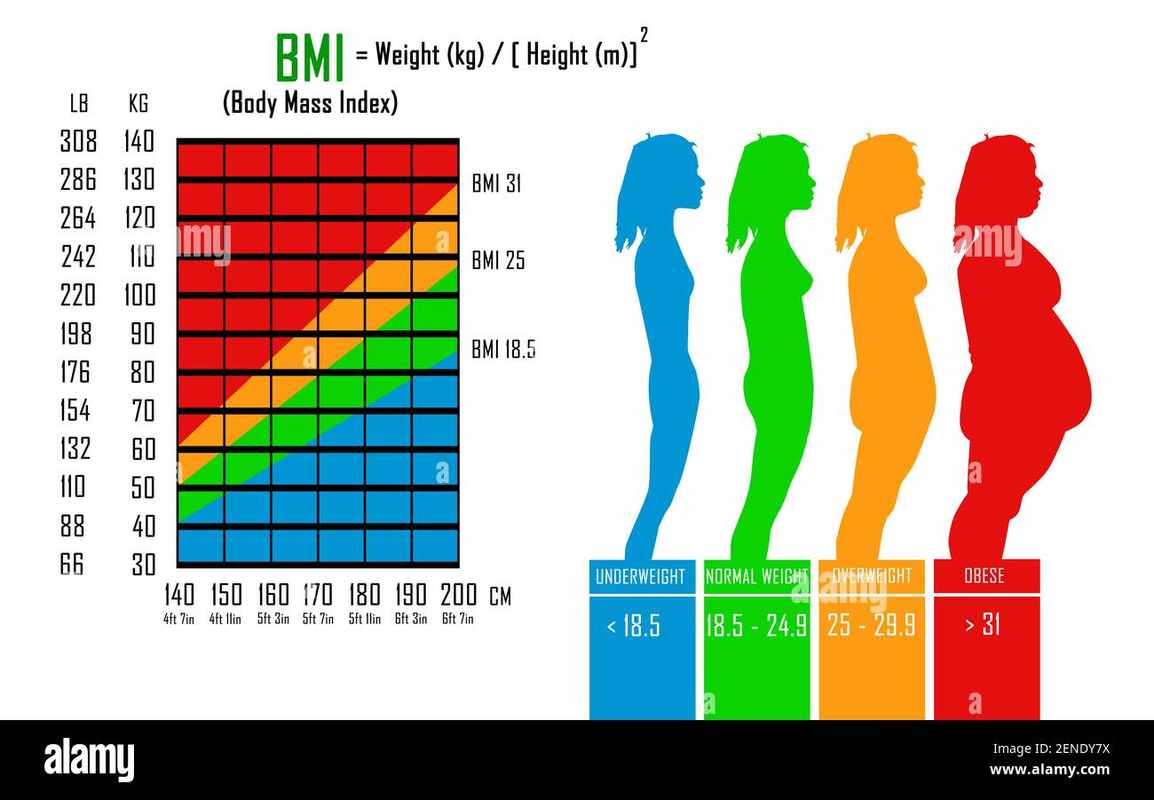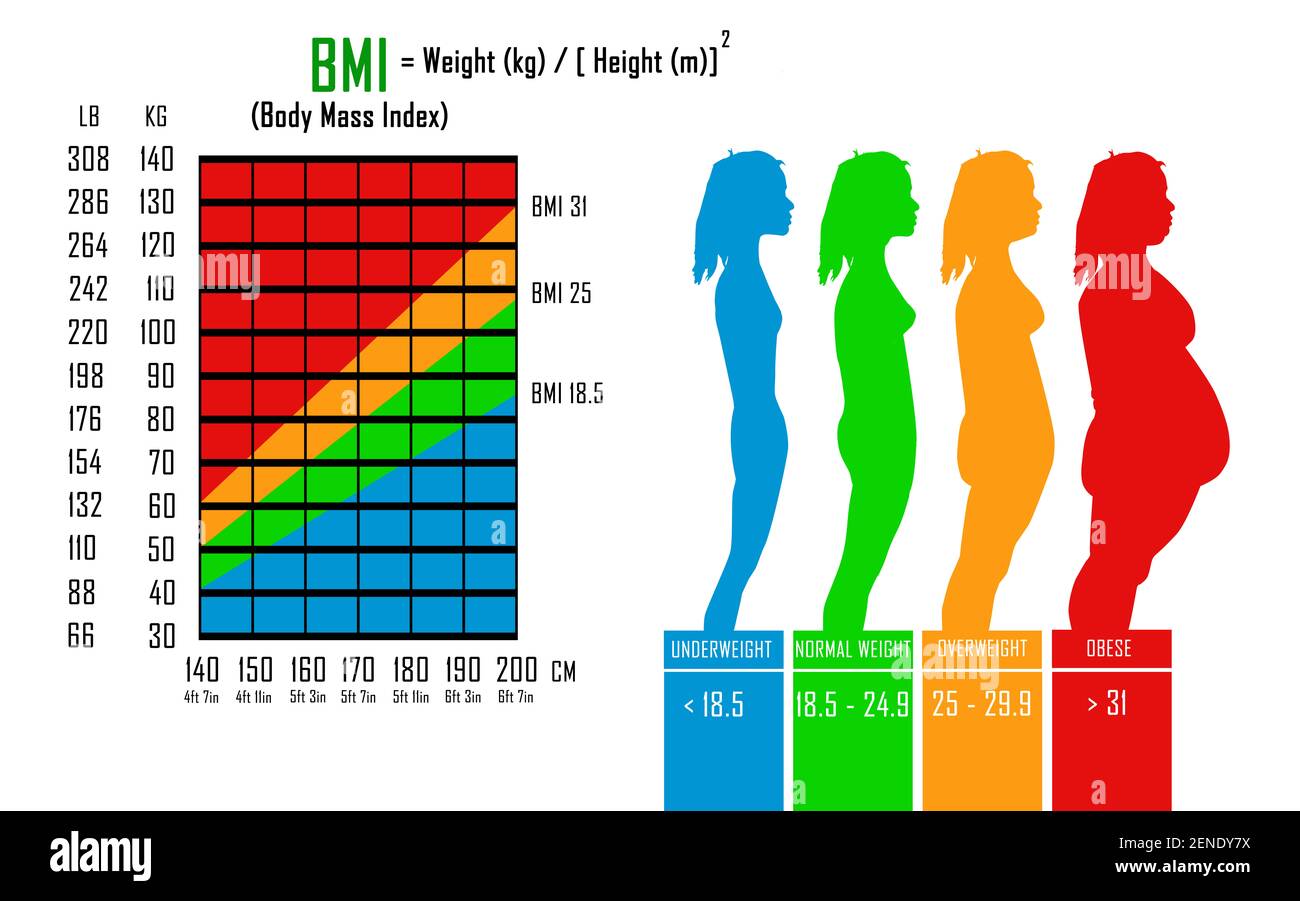Are you tired of feeling self-conscious about your body shape or worried about being categorized as “overweight” according to societal standards? If so, it’s time to break free from the constraints of traditional weight norms and focus on what truly matters – a healthy lifestyle. In this blog post, we’re going to explore the importance of acknowledging individual differences in body mass index (BMI) and provide you with a comprehensive women’s BMI calculator chart to take control of your health.
The Need for a More Accurate Approach
Traditionally, BMI has been used as a quick and easy way to determine whether someone is at a healthy weight. However, this one-size-fits-all approach often falls short in capturing the complexity of human bodies. For instance, athletes may have a higher percentage of muscle mass compared to body fat, resulting in a misleadingly high BMI reading.
The Limitations of Traditional BMI
There are several reasons why traditional BMI is not an accurate representation of overall health:
- BMI doesn’t account for muscle mass or bone density,
- It’s not sensitive enough to detect changes in body composition,
- And it can be influenced by age, height, and ethnicity.
In the next section, we’ll delve deeper into the importance of considering individual differences when calculating BMI. Stay tuned!

Now that we’ve established the limitations of traditional BMI, let’s dive deeper into the importance of considering individual differences when calculating BMI.
The Importance of Considering Individual Differences
A one-size-fits-all approach to determining healthy weight can be damaging and misleading. For instance, a woman who is 5’6″ tall and has a high percentage of muscle mass may have the same BMI as a woman who is 5’2″ tall and has a higher percentage of body fat.
This highlights the need for a more nuanced approach that takes into account individual differences in body composition, age, height, ethnicity, and other factors. By considering these differences, we can get a more accurate picture of overall health and well-being.
Why Waist-to-Hip Ratio Matters
In addition to BMI, waist-to-hip ratio is another important factor to consider when evaluating body composition. This ratio measures the circumference of the natural waistline (just above the belly button) compared to the circumference of the hips at their widest point.
A study published in the Journal of Women’s Health found that women with a higher waist-to-hip ratio are more likely to experience menstrual irregularities, type 2 diabetes, and cardiovascular disease. On the other hand, women with a lower waist-to-hip ratio tend to have better metabolic profiles and are less likely to develop these conditions.
By taking into account both BMI and waist-to-hip ratio, we can get a more comprehensive picture of overall health and well-being. And that’s exactly what our women’s BMI calculator chart is designed to do.
The Women’s BMI Calculator Chart: A Tool for Empowerment
Our women’s BMI calculator chart is designed to provide a more accurate and personalized assessment of body composition. By considering individual differences in age, height, ethnicity, and other factors, we can get a more realistic picture of overall health and well-being.
Using our BMI calculator chart, you can:
- Get a personalized BMI reading that takes into account your individual characteristics,
- Evaluate your waist-to-hip ratio and understand the implications for your health,
- Develop a more accurate understanding of your body composition and how it relates to overall health.
By using our women’s BMI calculator chart, you’ll be empowered with the knowledge and tools needed to make informed decisions about your health and well-being. And that’s what truly matters – being in control of your own health journey.
In our next section, we’ll explore the benefits of a healthy lifestyle and how it can impact overall well-being. Stay tuned!
Get Expert Medical Guidance
Consult with a medical professional for personalized advice and support.
Start chatIn our previous sections, we’ve discussed the limitations of traditional BMI and the importance of considering individual differences when calculating it. Now, let’s summarize the key points covered so far:
- We explored the need for a more accurate approach to determining health based on body mass index (BMI),
- Examined the limitations of traditional BMI, including its failure to account for muscle mass or bone density, and its sensitivity to age, height, and ethnicity,
- And provided you with a comprehensive women’s BMI calculator chart to take control of your health.
So, what does this mean for you? It means that instead of focusing on societal standards of beauty or weight, you can focus on cultivating a healthy lifestyle that suits your unique needs and body composition. By using our women’s BMI calculator chart, you’ll be able to get an accurate reading of your BMI and track your progress over time.
Remember, health is not about meeting someone else’s standards – it’s about feeling good in your own skin. With our comprehensive guide, you’ll be empowered to make informed decisions about your health and wellness, and to live a life that truly reflects your values and priorities.
So go ahead, take control of your health, and start living the life you deserve!
Average core body temperature: Ever wondered what your body’s normal temperature range is? Find out how your core body temperature is regulated, and learn some surprising facts about how it can impact your overall health.
The estimating problem on page 734 and then answer the questions on page 735: Are you struggling with estimation skills? Get tips on how to improve your math skills and learn how to tackle complex problems with confidence.


